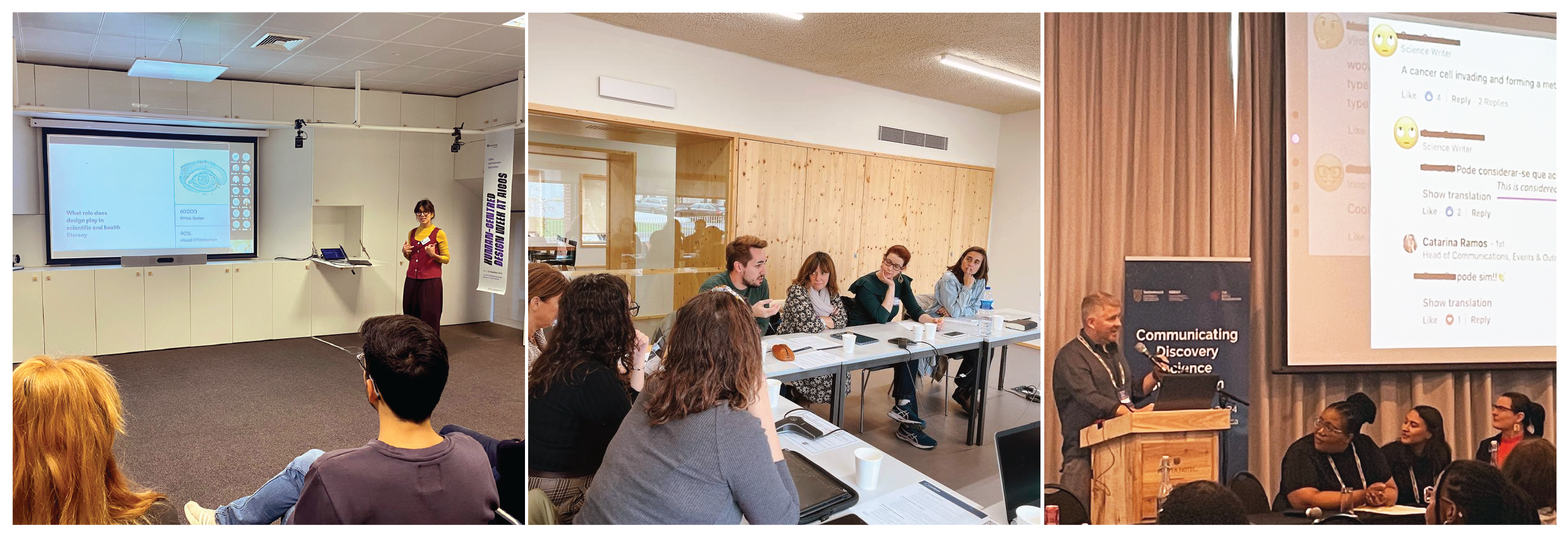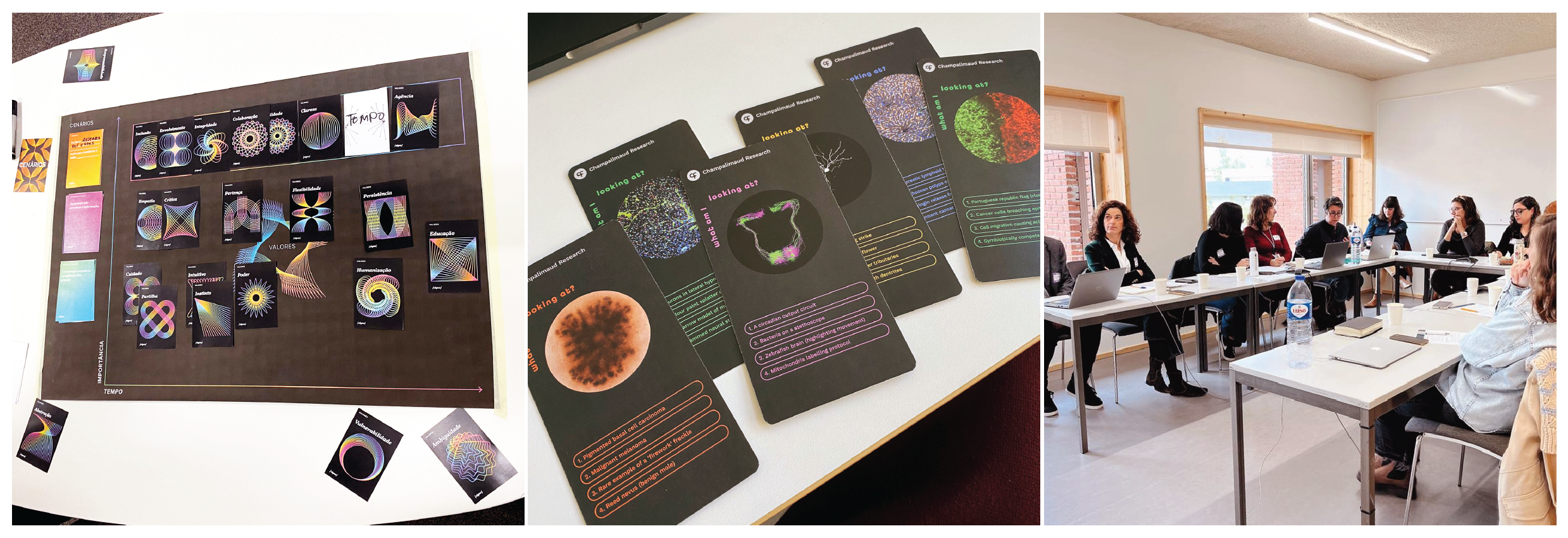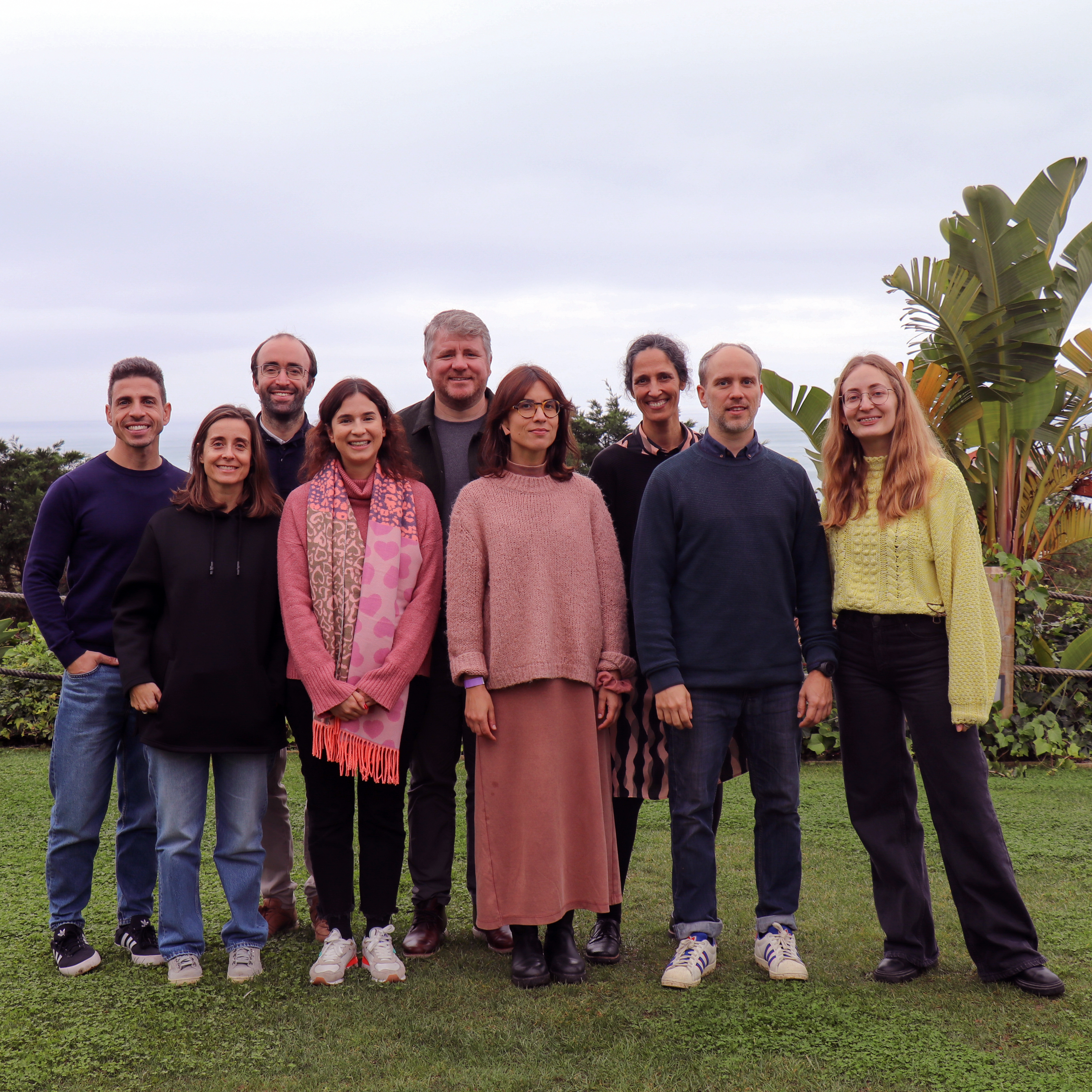Science You Can Believe In
On 14 November, CEO Team Coordinator Catarina Ramos joined a group of experts at ISCTE – Instituto Universitário de Lisboa for a roundtable discussion about trust in science. This marked the culmination of the European Commission-funded POIESIS project, an international research consortium spanning seven countries.
The event gathered professionals from fields as diverse as design, podcasting, and academia, to develop actionable recommendations for promoting good institutional practices in scientific integrity and science communication. “I was invited by the team led by Marta Entradas, Assistant Professor at ISCTE”, Catarina began. “Coincidentally, the next week, Marta was at the same international Science Communication Conference in South Africa, where my colleague John Lee presented a work developed by our team!”. More on that later.
Scientific Integrity: Working on Trust from Within
The roundtable’s first topic centred on integrity within scientific institutions. “We started off with questions like: How should authorship be assigned on research papers? How should institutions handle cases of fraud or misconduct? How many institutions have an ombudsperson, and should that role be internal or external? What about addressing power imbalances? The group discussed how, without proper safeguards, those in positions of authority might protect one another, potentially leaving individuals, such as students, in vulnerable situations”.
Recommendations from the discussion included establishing clear structures and codes of conduct, offering ongoing training in integrity, and protecting researchers from external pressures (e.g. funders, governments, public opinion) while upholding high standards of scientific integrity.
Public Engagement: Building Bridges Through Trust
The second topic revolved around public trust in science. “One interesting and surprising talking point was about the importance of designing buildings in a way that encourages openness and collaboration”. Catarina pointed to examples like CERN’s Science Gateway and ISTA’s visitor centre VISTA, which are reimagining public spaces for scientific engagement. “These aren’t museums—they’re interactive hubs where research and public outreach converge. The scientific community actively contributes to the programmes, creating a dynamic dialogue between science and society”.
Participants also discussed the relevance of raising awareness about the scientific process and the early stages of research, rather than waiting until it is published, as well as strategies to counter disinformation, emphasising the importance of storytelling and emotion. “Facts alone aren’t enough”, Catarina said. “We need to connect with people on an emotional level. Humour, for instance, can be an incredibly effective tool”.
The conversation turned to the qualifications needed for science management roles. “ I think there was consensus from the group that while you don’t need a PhD in science, you do need a solid understanding of the scientific process. Coming purely from a business background might not be enough to navigate the complexities of research administration”.
A Portuguese Success Story and Generational Shifts
Another topic was the high level of trust in science and in scientists among the Portuguese, when compared with other European countries. “The late Mariano Gago’s legacy, as Minister for Science and Higher Education, lives on in initiatives like Ciência Viva”, Catarina reflected. “By creating this national agency for the promotion of scientific and technological culture, now with 22 science centres across the country, he ensured that nearly every Portuguese child could have access to science firsthand. This proximity engenders trust, familiarity, and critical thinking”.
Reflecting on generational shifts in science communication (SciComm), Catarina observed that younger scientists are more eager to engage with the public. “In the past, academics mostly communicated with their peers. Now, there’s a growing recognition that communication/outreach is part of a scientist’s responsibility. This change is critical because trust depends on familiarity—you can’t really trust someone who is distant, who you don’t know”.
However, she also noted challenges in balancing public interest. “While disease-related research captures attention easily, studies on less tangible topics might have a bigger struggle. It’s also up to us, as science communicators, to show why all scientific research, and its process, matters”.

Discovery Science and the Art of Engagement
From 18 to 20 November, scientists and communicators—including the CEO team’s Communication Consultant John Lee—convened in Stellenbosch, South Africa, for the “Communicating Discovery Science” symposium. This conference, organised by the Kavli Foundation and the Science Public Engagement Partnership and set against the backdrop of the Cape Town Winelands, focused on innovative ways of sharing fundamental, or “discovery,” science with the public.
John’s contribution came in the form of a presentation on What Am I Looking At? (WAILA) | O que é isto? (in Portuguese), an interactive series launched this year by the CEO team, and spearheaded by John. “When we submitted an abstract about this project to the Scientific Committee of this symposium, we thought we might present a poster or give a talk online”, John shared. “Being invited to speak in person was unexpected but very welcome”. Reaching Stellenbosch, however, was no small feat. “It was a 24-hour trip via Dubai and Cape Town. I didn’t feel jet-lagged, but it was a bit of a trek!—and completely worth the effort to share thoughts with SciCommers from all over the world in such a beautiful setting”.
Day 1: Challenging Assumptions about Public Interest in Science
The first day’s premise was that public interest isn’t confined to applied research. “A 2019 survey revealed that 90% of US adults see basic or fundamental research—which advances knowledge even without immediate applications and benefits—as essential or important, and this sentiment has remained consistent for decades”, John noted. “A more recent poll found that 88% of US adults believe basic research deserves federal government funding”.
Data was also presented regarding the emotional motivations behind engagement with science discoveries. “Scientists are often driven by curiosity and joy,” John explained. “But the public tends to seek hope—an understanding of how discoveries might lead to future solutions. There’s no reason why, when we communicate science, we can’t try to satisfy both”.
Speakers considered ways to make discovery science appealing to the public, linking it to potential outcomes without oversimplifying. “It’s not about misleading the public into thinking every experiment will yield immediate results,” John said. “It’s about giving context—why this research matters and what it could mean in the long run”.
Bruce Lewenstein of Cornell University challenged the traditional distinction between basic or fundamental and applied science. “He made the compelling case that science is a continuum,” John noted. “Basic research often transitions seamlessly into applied science—sometimes overnight. Creating artificial divisions can mislead the public and weaken support and funding for discovery science”.
Day 2: Practical Applications of SciComm
The second day shifted to actionable strategies. “One key takeaway was the importance of asking your audience to do something. Whether it’s clicking a link, watching a video, or signing up for a course, engagement should require a clear call to action”.
John also found the discussions on audience targeting particularly valuable. “You can’t create content for everyone. You need to define your demographic and tailor your message accordingly. Aiming for ‘the general public’ is too broad to be effective”.
The idea of setting measurable goals also stood out. “It’s not enough to say, ‘We want more people to see this’. You need specific objectives, like getting 20% of high school students to read an article or 200 high schoolers to attend an event. Precision makes your efforts far more impactful. For too long, science communication had targets of ‘disseminating knowledge’ and ‘inspiring future scientists’, but these objectives are too broad and vague, dooming them ultimately to failure. Clear, achievable goals are much more useful”.
WAILA: An Example of Creative Engagement
John’s presentation on the WAILA series showcased how pairing striking lab-generated visuals with interactive elements and audio narration can captivate and elevate discovery science. “Our graphic designer, Carla Emilie Pereira, created stunning slides for this presentation that really brought the concept to life”.
“I’m really pleased with how the presentation went”, continued John. “The audience seemed to genuinely enjoy and appreciate the content. As usual at conferences, the corridors and coffee breaks were great opportunities to answer questions and dive deeper. WAILA sparked a lot of interest and positive feedback—every single flyer I brought was snapped up in no time!”.
The presentation led to discussions with potential collaborators, from South Africa and Slovenia, including from the NRF-SA Institute for Aquatic Biodiversity and from the Institute Kontekst for Scientific Engagement and Outreach.
John was particularly struck by the value placed on squeezing the most out of creative ideas. “With WAILA, we could have stopped at just sharing the images with text. Instead, we made it interactive, added audio voiceovers, and it really paid off. We also have major plans to continue WAILA with a live version, touring science events and schools”.
John concluded, “Of course, in SciComm, there’s still some information that simply requires dissemination, and that’s fine. But for creative projects that really have the potential to engage, we should focus on how we can maximise the impact—what we want our audience to learn, feel, or do—in order to get the most out of the science that we communicate”.
Bringing SciComm to Human-Centred Design Week
From November 25 to 29, Marta Correia, Designer in the CEO Team, took part in the 3rd edition of Human-Centred Design Week (HCDweek@Fraunhofer) in Oporto. Hosted by Fraunhofer Portugal AICOS, this multidisciplinary event united designers, engineers, and researchers to explore how participatory design can create meaningful, inclusive, and ethical technologies.
Giving a Voice to the Underserved
The Human-Centred Design group at Fraunhofer Portugal AICOS focuses on inclusive design, particularly for traditionally underserved users, such as the elderly, individuals with disabilities, and industrial workers. Through participatory methods, the group places user needs at the heart of digital technology design, from user interfaces to physical objects.
“Ana Correia de Barros, Head of Human-Centred Design, and Ricardo Melo, a senior researcher at the group, were curious not only about the design work we do at CF but also about the ideas and principles behind it”, Marta explained. “Their invitation was an opportunity to share our approach and the processes we’ve honed over the years, while learning from others who share a strong focus on user-centred design”.
Takeaways from the Week
On Day 2, a workshop highlighted how designing for people with disabilities often benefits everyone, prompting Marta to reflect on the importance of including a broader spectrum of users in design processes. “A standout talk for me on Day 3 looked at passive monitoring for dementia—a care tool cleverly designed as a flower vase! It raised critical questions about striking an ethical balance between privacy, data collection, and patient well-being”.
“The workshops and talks offered an intriguing mix of creative thinking and practical solutions, from user research methodologies and practices to redesigning workspaces to meet environmental challenges, like water scarcity”.
Designing for Science and Measuring Impact
In her talk, Design for Impact: Communicating the Unknown, Marta showcased a diverse array of CF projects, ranging from patient recovery brochures and the visual identity of art-science events (Metamersion: Healing Algorithms exhibition) to the interactive WAILA series.
Her presentation touched on the challenges of being a designer in a scientific institution. “I don’t have a science background, so I rely on team members as knowledge brokers. Their expertise really helps me translate abstract concepts into visuals that speak to diverse audiences”.
Marta added, “Preparing for the talk gave me the chance to reassess my practice—something I hadn’t done in years because the process had become second nature. Taking a step back cleared my thoughts and sparked new ideas, particularly around verbal and visual communication. It also reminded me how central collaboration is to everything we do at CF”.
One of Marta’s biggest takeaways from the event was the need to better evaluate the impact of design. “Most of our feedback comes from social media and tends to be congratulatory rather than analytical. This made me consider ways to measure our work’s effectiveness—for example, by gathering more direct feedback from end-users or using data-driven approaches to assess how well our designs communicate. These steps could ensure our work is both visually engaging and impactful”.




